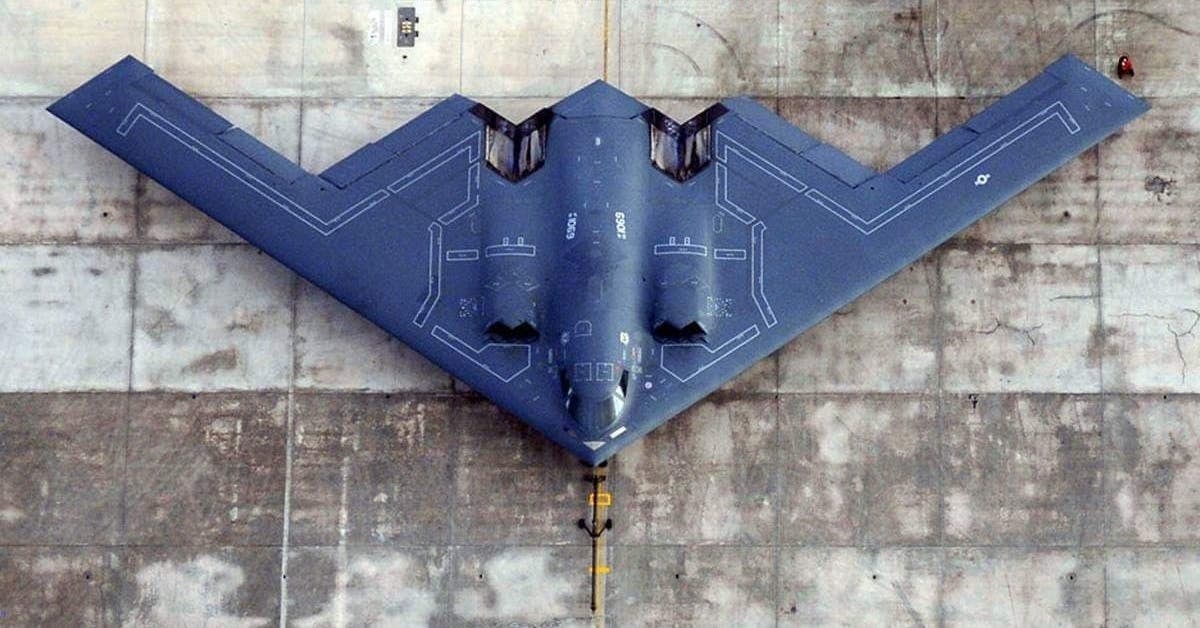The B-21 Raider is the future of U.S. Air Force’s strategic bombers. When that future will begin remains unclear. The Air Force recently announced that the B-21 will not make its first flight until 2023.
Originally, the Raider was scheduled to fly in 2021. Then 2021 became 2022. And now, we’re looking at 2023. Still, “the aircraft is reasonably on track and has stayed within its budget – a modern miracle for expensive defense programs,” Kyle Mizokami wrote in Popular Mechanics.
The First Strategic Bomber in 30 Years
The U.S. has not unveiled a strategic bomber in thirty years, not since the B-2 Spirit rolled off the Northrop Grumman production line in the late 80s. The B-2, the world’s first-ever stealth bomber, is a flying-wing design developed with a total program cost of $2.3 billion per aircraft. Only 21 B-2s were ever made and all but one are still in service. One was lost in an accident when it ran off the runway in Guam. The B-21, also a Northrop Grumman product and also a flying-wing, is a progeny of the B-2.
Details on the B-21 Remain Elusive
Not much is known about the B-21; the program has been cloaked in secrecy with only the occasional kernel of information making it to the public. “What we know for sure is that the aircraft was purpose-built from the ground up to replace at least two thirds of America’s aging heavy bomber fleet,” Alex Hollings wrote for Sandboxx.
The current U.S. Air Force bomber inventory includes the B-2 stealth bomber, the Eisenhower-era B-52, and the supersonic B-1. Once the B-21 enters service, the B-1 and the B-2 will begin to be phased out. Counterintuitively, the 70-something-year-old B-52 will remain in service, because, it does what it was designed to do effectively and cheaply: drop a lot of bombs.
“In order to serve as a viable replacement for both the super-fast B-1B and the super-stealthy B-2 Spirit, the B-21 Raider will have to be able to engage any target, at any time, anywhere on the globe,” Hollings wrote.
Forging the Way in Stealth
To engage any target, anywhere in the world, the B-21 will rely, in part, on improved stealth technology. The specifics of the B-21’s stealth capabilities are unclear, but undoubtedly, as enemy air defense systems grow increasingly more sophisticated, U.S. aerospace designers are persistently refining stealth technology. Each successive U.S. stealth aircraft has had lower observability than its stealth predecessors, from the F-117 to the B-2, to the F-22, to the F-35. In all likelihood, when unveiled, the B-21 will have the world’s most advanced stealth capabilities.
Without question, the B-21 will be able to carry a large quantity, and a large variety, of both conventional and thermonuclear weapons. Approximately zero information has been released about the B-21’s payload capacity, but we can expect the Raider will be equipped to deploy the B-61 variable-yield nuclear gravity bomb and the Long Range Standoff (LRSO) nuclear cruise missile. But the B-21 will be too fundamental to Air Force fleet structures – and too expensive to produce – to be typecast as just a nuclear deterrent or nuclear deploying airframe. No, the B-21 will be able to deploy conventional weapons, so that the bomber may participate in more standard combat operations, especially in the Pacific.
“The B-21 will be a major asset in any conventional war with China, flying long distances and unleashing long-range cruise missiles against enemy targets. The B-21’s range will enable it to strike China if necessary,” Mizokami wrote.
When the B-21 is ready for production, the Air Force hopes to buy between 100 and 200 aircraft, likely making the Raider the lynchpin of U.S. strategic bombing capabilities for decades to come.
Harrison Kass is the Senior Defense Editor at 19FortyFive. An attorney, pilot, guitarist, and minor pro hockey player, he joined the US Air Force as a Pilot Trainee but was medically discharged. Harrison has degrees from Lake Forest College, the University of Oregon, and New York University. He lives in Oregon and listens to Dokken.

